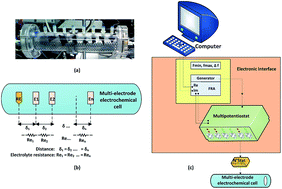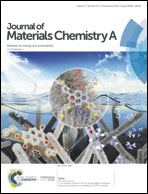Electrode material properties for designing effective microbial electrosynthesis systems†
Abstract
The electrode material is one of the key components of a bioelectrochemical system (BES), serving as substratum for the electroactive biofilm development and hence playing a pivotal role in regulating the type and rate of electron transfer processes and bioelectrochemical conversions. Microbial electrosynthesis (MES) requires biocompatible electrode materials with a large surface area, that can support the effective development of microbial biomass at high current densities to provide significant product titers. Carbon-based materials are the most employed and constitute the best available option to grow electroactive biofilms; yet, resolving which of their properties are truly relevant to achieve these goals remains elusive. The present study shows that biofilm coverage and the relative abundance of cell-bound polymeric filaments are directly proportional to the total charge consumed over time. The combination of high biofilm coverage and high relative abundance of the cell-bound polymeric filaments resulted in low charge transfer resistances, as determined by electrochemical impedance spectroscopy. Although a wide variety of physicochemical parameters of the supporting carbon electrode materials (electric conductivity, specific surface area, porosity, roughness, thermogravimetric mass spectrometry, etc.) were characterized in this study, the only one that showed a consistent correlation with the total charge consumed by the electroactive biofilms was the contact angle. This suggests that the hydrophilic moieties and surface tension are two fundamental parameters to consider for an effective design of microbial electrosynthesis biocathodes. Among the carbon electrode materials used in the present study, an activated carbon-based VITO CORE™ electrode was considered the most suitable electrode material to provide such desired features, while other electrodes exhibited roughnesses much higher than those amenable for the microbiological range. The superior wetting characteristics of the VITO CORE™ electrode seem highly reliant on the roughness provided by the manufacturing method (i.e., cold-rolling).



 Please wait while we load your content...
Please wait while we load your content...